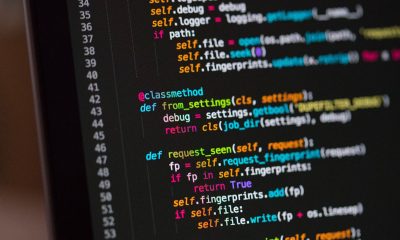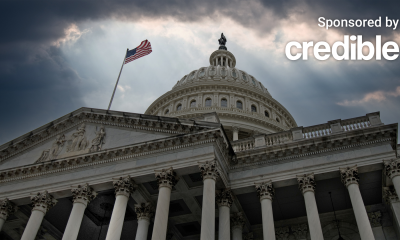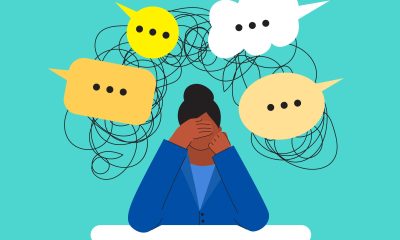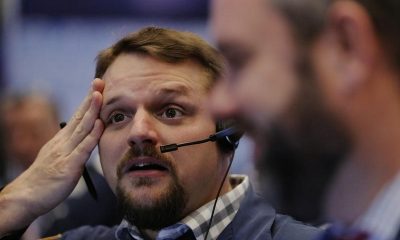Side Hustles
What ‘Higher for Longer’ Interest Rates Means for Businesses

Entrepreneur
There’s a big change occurring in business that doesn’t show up in the daily headlines. It has to do with the underlying cost of capital in the economy, and some of its biggest effects will be on the market for labor and how companies use it.
What’s changing is what economists call the “real interest rate:” the baseline cost of borrowing after adjusting for inflation. In most growing economies, the real interest rate is positive, as there’s a concrete return to investing in new capital. But for years, the real interest rate in the U.S. was close to zero — and even negative — as the Fed injected trillions of dollars into credit markets.
Those days are over. Even with interest rates on hold, the Fed continues to pull money out of credit markets by selling long-term securities. At the same time, governments around the world are holding historically high levels of debt, a big component of the demand for credit. Together, these factors make funding harder to come by for businesses.
The Fed’s latest estimates suggest that the real interest rate for safe securities with a 10-year term has risen close to 2% after hovering around 0.5% before the Covid-19 pandemic. The actual interest rate that companies must pay to borrow starts with this 2% number and adds inflation on top. So at 3% inflation — where the economy seems to be stuck right now — the total rate comes out to at least 5%. And that’s just for the safest borrowers; growing companies will have to pay more.
Despite the Fed’s best efforts, inflation is expected to stay slightly above its target of 2% for several years to come. So unless the real interest rate drops, companies that borrow to raise capital can expect to keep paying high rates for quite a while. Here’s what this is likely to mean for how they do business.
Related: How Small Businesses Can Master a Complex Labor Market
More labor, less capital
The increase in the real interest rate makes capital — productive stuff like buildings, machinery and computers — relatively more expensive than labor. In response, companies will probably shift the mix of inputs they use to produce goods and services. Growing companies especially will be more likely to hire and less likely to borrow. Companies that aren’t growing may slow their attrition of staff. With a greater demand for labor in a market that’s still tight by historic standards, workers could regain some of the bargaining power they gave back during the past year or two.
Automation on hold
With inputs more slanted toward labor, trends in production processes will also change. Moves toward greater automation in both manufacturing and services will be slower, all other things equal, as will adoption of new technologies like artificial intelligence. Automation was an important long-term play for companies dealing with labor shortfalls during the past several years. For companies considering it now, that play could be a lot more expensive.
Slower growth in pay
If companies invest less in new capital, then their workers will have less productive stuff to work with. As a result, their productivity won’t increase as quickly. So although higher demand for labor could push pay upwards, the economic fundamentals that drive pay upward in real terms over long periods could be weaker. On balance, the economy might have lower unemployment but without the rapid wage growth that often comes with a tight labor market.
Related: 4 Ways the Labor Market Is Changing Right Now
Greater stability in the workforce
High real interest rates are usually associated with higher saving rates. When people and businesses have more savings, they’re better able to ride out economic and financial shocks. There is also some evidence that prices are less volatile when real interest rates are higher. So the coming years may exhibit a bit more stability, at least insofar as the economy is driven by fundamentals rather than external shocks.
This will be a welcome development for the labor market, which is finally finding a measure of stability after the dramatic swings of the pandemic. A volatile economic cycle means high rates of hiring and firing — as well as increased recruiting costs, added frictions in production and smaller investments in training and employer-employee relationships. If the economic cycle settles down, those negatives will turn into positives.
All of these trends will happen simultaneously and may reinforce or counteract each other before the economy settles into a new equilibrium. (Who said economics was simple?) But the overall tendency is pretty clear: a greater focus on labor, with a steadier if perhaps less dynamic labor market. After the wild ride of the past few years, that’s something workers might actually welcome.
As for businesses, those that need to borrow to raise capital may want to reconsider some of their plans. Relying more on labor and less on technology may feel like a step backward, but it doesn’t have to be one; new and cost-effective tools for workers, like generative artificial intelligence, can offer the best of both worlds. At the very least, businesses can take advantage of the labor market’s stability by making deeper investments in staff who will stay for the long term.
Read the full article here

-

 Side Hustles5 days ago
Side Hustles5 days agoThis User-Friendly H&R Block Software Package is Only $40, While Supplies Last
-

 Investing5 days ago
Investing5 days agoTikTok faces US ban deadline as users brace for fallout By Reuters
-

 Passive Income4 days ago
Passive Income4 days agoTrain for a New Tech Career in 2025 With This $25 Course Bundle
-

 Personal Finance6 days ago
Personal Finance6 days agoDecember inflation clouds Fed's outlook on interest rate cuts
-

 Side Hustles6 days ago
Side Hustles6 days agoSupreme Court TikTok Ban: What to Know, January 19 Deadline
-

 Passive Income6 days ago
Passive Income6 days agoUse These ChatGPT Prompts to Boost Your Amazon Sales
-

 Side Hustles1 day ago
Side Hustles1 day agoYou Might Not Get a New Job in 2025 Without These 2 Skill Sets
-

 Investing4 days ago
Investing4 days agoAchieve Your Goals Faster With This Meditation App, Now 50% Off


















